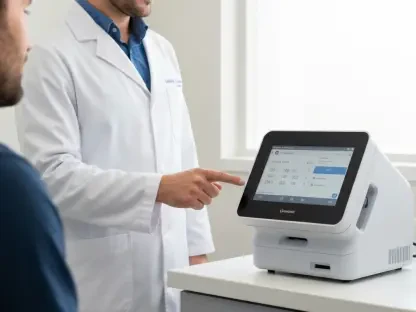Despite increasing investments and rising costs, the pharmaceutical industry’s internal rate of return (IRR) from research and development (R&D) has been on a downward trajectory for decades. Recently, however, an analysis indicates the possibility of a resurgence in R&D returns, a development that many attribute to strategic portfolio management and the embrace of cutting-edge technologies such as artificial intelligence (AI). This shift marks a significant transformation within the pharmaceutical sector, as companies recalibrate their focus toward pioneering research and harness emerging technological enablers to fuel growth and innovation. These bold strategies reflect a renewed determination to address significant unmet medical needs and carve out new positions in a competitive landscape.
Strategic Approaches to Revitalize R&D
The pharmaceutical sector is undergoing a crucial transformation as outlined in Deloitte’s “Be brave, be bold” report, which highlights twin strategies aimed at revitalizing R&D. The “Be bold” strategy calls for investing in first-in-class science by reallocating capital toward novel avenues that address substantial unmet medical needs. In this context, companies are deploying AI-driven discovery processes to explore new mechanisms of action (MoAs) that have historically remained unexplored. This forward-thinking approach not only fosters innovation but also signifies a departure from over-reliance on existing mechanisms. Despite the fact that novel and fast-follower MoAs comprise a relatively modest percentage of late-stage assets, they account for a substantial portion of anticipated value, underlining the importance of continuous exploration and investment in groundbreaking science.
Emphasizing novel discovery over conservative extensions is crucial for yielding the much-needed breakthroughs in treatment paradigms. Pharmaceutical companies are increasingly committed to directing efforts toward areas teeming with potential yet uncharted by traditional methodologies. This reshaping of priorities in R&D contributes significantly to anticipated improvements in the industry’s IRR. The evolving landscape fosters not only competitive dynamics but also invites a more expansive approach in evaluating therapeutic potential, laying the foundation for transformative advances in healthcare. Through embracing these novel MoAs and cultivating an innovative spirit, the industry is well-positioned to realize meaningful advancements and improved patient outcomes while enhancing its financial performance.
Embracing Market Challenges
In the realm of embracing market challenges, the “Be brave” strategy champions the need for companies to maintain market conviction even in overcrowded sectors. The strategy demands pioneering fresh opportunities across multifaceted therapeutic landscapes, such as oncology, immunology, and the central nervous system (CNS), while remaining open to abandoning less promising projects. Despite the daunting challenges posed by saturated fields, organizations demonstrating the courage to question the status quo are making strides towards identifying potential opportunities for mega-blockbuster discoveries. This bold endeavor encourages entities to refine their selection processes and deploy data-driven evaluations to weed out less fruitful ventures.
Alongside the strategic realignment, there is a clear shift away from “me-too” pursuits in research pipelines towards smart, targeted investments that prioritize differentiated insights. This transition aims to yield a higher IRR by fostering pioneering discoveries in underrepresented domains. With a focus on streamlined resource allocation and strategic foresight, pharmaceutical enterprises are strategically recalibrating their efforts to align with areas characterized by high unmet needs and untapped market potential. This approach not only emphasizes financial prudence but also nurtures innovation within the sector, propelling it to establish meaningful advancements for both the broader community and patients.
Pivoting Away from Saturated Markets
As the industry adapts to the evolving landscape of research and development, there’s a noticeable pivot away from saturated markets, particularly oncology, despite its substantial share of late-stage assets. Oncology continues to hold significant promise in terms of potential profits; however, intense competition and participant recruitment challenges have encouraged a shift toward other therapeutic areas. According to the Deloitte report, there’s growing interest in neurology, focusing on conditions like Alzheimer’s, stroke prevention, and multiple sclerosis. This strategic pivot opens new avenues for companies to enhance their IRR and capitalize on less contested spaces, fostering increased innovation within the industry.
The noteworthy success of GLP-1 therapies in less saturated markets stands as a testament to the potential for growth and profitability amidst reduced competition. This success story demonstrates how exploring fresh therapeutic areas can yield substantial dividends, serving as a model for industry players looking to replicate similar achievements. By targeting less saturated niches, pharmaceutical companies have an opportunity to strike a balance between profitability and sustainable development, thus realizing a new era of dynamic market exploration. As companies seek to zero in on niche therapeutic areas, the focus on differentiated value propositions becomes paramount, thereby creating pathways for success in the ever-evolving drug development sector.
Addressing Rising Costs and Development Timelines
Amid strategic realignments, the enduring challenge of escalating drug development costs remains a significant concern for the pharmaceutical industry. The cost of bringing a drug to market is projected to soar to an estimated $2.229 billion by 2025. Key factors contributing to these skyrocketing expenses include intricate trial processes, extended timelines, and high attrition rates, as many resources are dedicated to clinical trials that ultimately fail. These complexities necessitate robust strategies to mitigate risks associated with lengthy and costly drug development pipelines, ultimately underscoring the need for improved efficiencies within the R&D framework.
The Deloitte report emphasizes the importance of a disciplined approach in portfolio management, advocating for a pragmatic balance between pursuing cutting-edge research and exercising financial prudence. Consistent investment in promising new areas is crucial to sustaining innovative breakthroughs while ensuring an efficient allocation of resources. Moreover, terminating inefficacious projects is a practical recommendation, allowing companies to direct resources more effectively. Such discipline in strategic decision-making safeguards innovation while optimizing cost-effectiveness, ultimately propelling the pharmaceutical industry towards sustainable growth and development. Through balanced portfolio management and prudent fiscal strategies, companies are well-positioned to address complex challenges and position themselves favorably in an evolving industry landscape.
Leveraging Technology and AI
The pharmaceutical industry is experiencing a major shift as detailed in Deloitte’s “Be brave, be bold” report. This transformation centers on two key strategies designed to rejuvenate R&D. The “Be bold” approach urges firms to invest in pioneering science by redirecting funds to innovative paths that tackle significant unmet medical needs. Within this framework, companies are utilizing AI-driven discovery processes to investigate new mechanisms of action (MoAs), which have previously been overlooked. This forward-looking strategy encourages innovation while moving away from dependence on existing mechanisms. Although novel and fast-follower MoAs make up a small portion of late-stage assets, they represent a significant expected value, emphasizing the need for ongoing exploration and investment in revolutionary science. Focusing on novel discoveries rather than conservative extensions is fundamental for achieving vital breakthroughs in treatment methods. This refocus in R&D priorities significantly bolsters the industry’s internal rate of return (IRR), inviting a more comprehensive evaluation of therapeutic possibilities.









